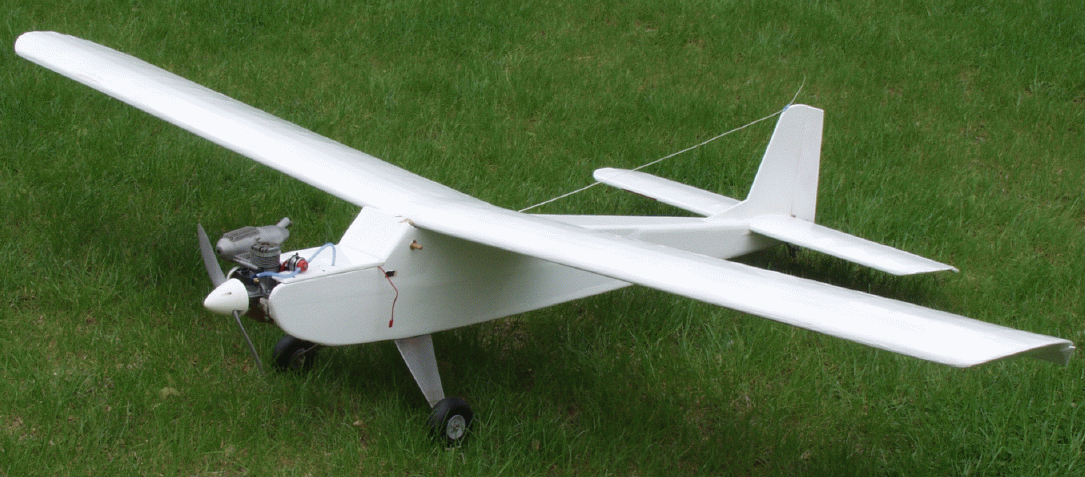Danko was in Bloomington for two weeks and made some revisions
to the visions system control. The main enhancement was ground
control of the camera gimbal. It was believed that the resulting
ability to orient the camera would make it easier to initiate
tracking and result in a higher percentage of useful passes in
flight. Given the very limited development time, the enhancement
was made primarily in software with minor hardware modifications
enabling additional radio channels to be interfaced to the
Coldfire processor.
June 1. Conditions: fair.
In three flights*, several passes were made over the ground
target using the long range camera lense, with the intent of allowing higher
altitude circling. At higher altitudes, the circling radius could be
larger and banking angles reduced, so piloting consequently would be much
easier. However, with the much narrowed field of view, it was nearly
impossible for the vision system operator to locate the target. When
the target was found, it was visible for only a fraction of a second,
not enough reaction time for the operator to put the system into
tracking mode. Use of the long-range camera lense was abandoned.
*Power was taken from the vehicle battery. The battery charge was
exhaused prematurely because the engine cooling fan was turned on
in "accessory" mode.
June 2
Conditions: Marginal; overcast, with gusty winds from SW at 5-20 kph.
Several flights were done, each with multiple passes. The lower range
lense was used on the camera. In the first flights circling was done at
three altitudes, and the best seemed to be at about 40 m [Bryce?].
- The trade-off between target size and angle of view was
manageable for the vision system, but within the window of
operability, pilot control was very difficult and would be
so even under better flying condition.
On the second flight, all attempts at circling were at the intermediate
altitude. The operator was able to find the target and had time to
activate the tracking system. However, radio interference, glare,
and lack of contrast on the monitor made this task difficult. In none
of the circling passes was evidence of tracking behavior observed.
There was an unexplained jump in camera position when tracking was
activated, and sometimes the activation command failed to take effect.
Danko felt that target size and contrast were adequate for target
identification.
- Danko suspects a synchronization problem in mode switching
(from ground control to tracking control of the camera), owing
to the ad hoc implementation of mode-switching. Mode control
needs to be re-implemented more carefully.
- Interference remains a significant problem for the ground operator
and also makes evaluation of recorded video difficult.
- At the best altitude and circling radius for target size, the range
of camera motion is inadequate to get a clear demonstration of
tracking. The aircraft banking puts the target near the extreme
angle for side vision, and the target always moves quickly out of
view.
- Especially in the presence of wind, piloting at the desired
circling radius is extremely marginal, and even dangerous to
the aircraft, since speed must be minimized.
In the final three flights, repeated linear passes were made over the
target. Passes into the wind were quite good from the perspective of
experimentation, since ground speed was extremely low. However, none
of the passes in which tracking was activated showed clear evidence
of tracking behavior. Recorded evidence was less conclusive than
in prior test flights because the ground operator could move the camera
as well as the tracking system.
- On more than one occasion, the command to activate tracking
had no effect.
- In one pass, there appeared to be a couple of seconds of
sustained tracking. However, if tracking occurred, the
camera was unable to stabilize on the target. Motion was
quite jerky and by the time the camera reached its address, the
target had moved significantly (1/4 - 1/3 of the visual field).
